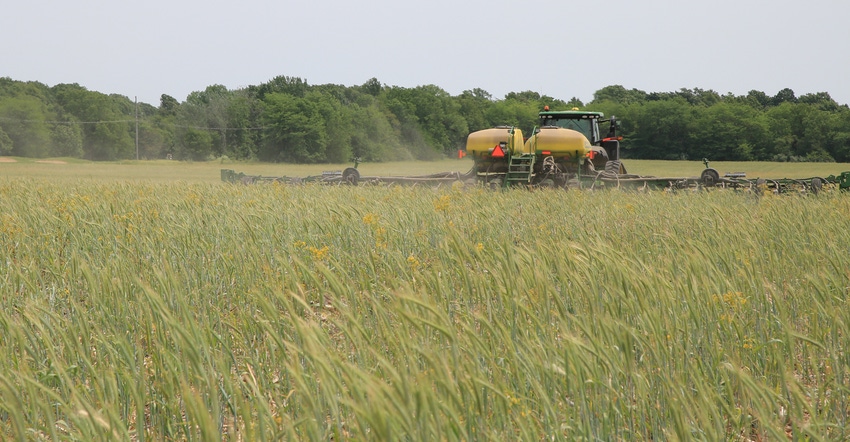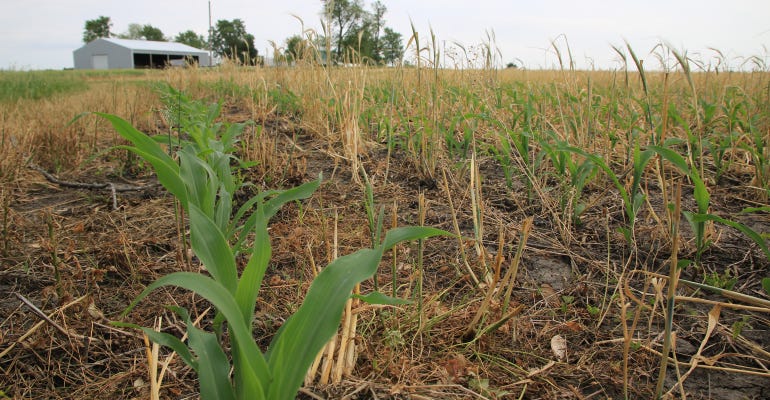
Illinois farmers may be able to reap a crop insurance reward next year for growing cover crops. The state budget passed in early June includes $300,000 for a pilot project that starts in the 2020 growing season and rewards farmers $5 for each acre that hosts cover crops through a crop insurance reward.
While the Illinois Department of Agriculture hasn’t finalized rules for the program, the committee of groups that has advocated for this policy since 2017 have a range of policy proposals that would model it after Iowa’s cover crop rebate, which will enter its third year this fall.
One proposal specifies that applicants in priority phosphorus and nitrate loss watersheds designated by the Illinois Nutrient Loss Reduction Strategy science assessment get preference in the limited program. Its ultimate purpose is to increase cover crop adoption in the state and popularize the technique as a risk reduction tool, says Kris Reynolds, Midwest director for American Farmland Trust and a Montgomery County farmer.
“This is the first time since 2015, when the NLRS was adopted, that any new funding has been allocated for practices identified in the strategy,” he says, noting that since cover crops keep both phosphorus and nitrogen from leaving the field, the practice floated to the top when compared to edge-of-field practices and in-field practices such as no-till, which many Illinois cover-croppers already follow.
“Groups ranging from ours to Illinois Corn Growers to conservation groups like The Nature Conservancy came together to strive for this common goal. We all recognize cover crops will have a great impact on reducing nutrient loss,” Reynolds says.

EMERGE: This corn planted into cereal rye in May shot out healthy in early June.

Ongoing Nutrient Research and Education Council research has determined overwintering cover crops are the best way to fight nitrate loss on tile-drained land. In work supported by the council, University of Illinois scientist Lowell Gentry determined cereal rye can decrease tile nitrate loss after corn by 40% when applying a maximum return to N rate of 50% at planting and 50% sidedressed.
“I lean towards trying to fix the problem in the field instead of treating the symptom at the end of the pipe,” says Gentry, who works at U of I’s Department of Natural Resources and Environmental Sciences.
He says cover crops also hold soil — and the phosphorus that binds to it. Reynolds agrees.
“We’ve seen heavy rains events this year, and the one thing farmers keep telling me is, ‘Wow, my cover crops did a great job of holding soil in place.’ It’s reducing their risk for losing soil, and they’re noticing,” Reynolds says.
The small pilot program will go a long way, Reynolds says, because it starts to tie the practice of cover cropping with risk management, when just five years ago, even farmers who grew cover crops were hesitant to disclose the practice to insurers for fear of not meeting strict termination guidelines by the Risk Management Agency.
“While those issues are now fixed, this pilot program gets the idea out that cover crops can be used as a risk management tool,” Reynolds says, concluding that fields that have been consistently cover-cropped will hold moisture better in the two- to three-week windows during late summer when areas of the state typically receive very little rain.
About the Author(s)
You May Also Like




